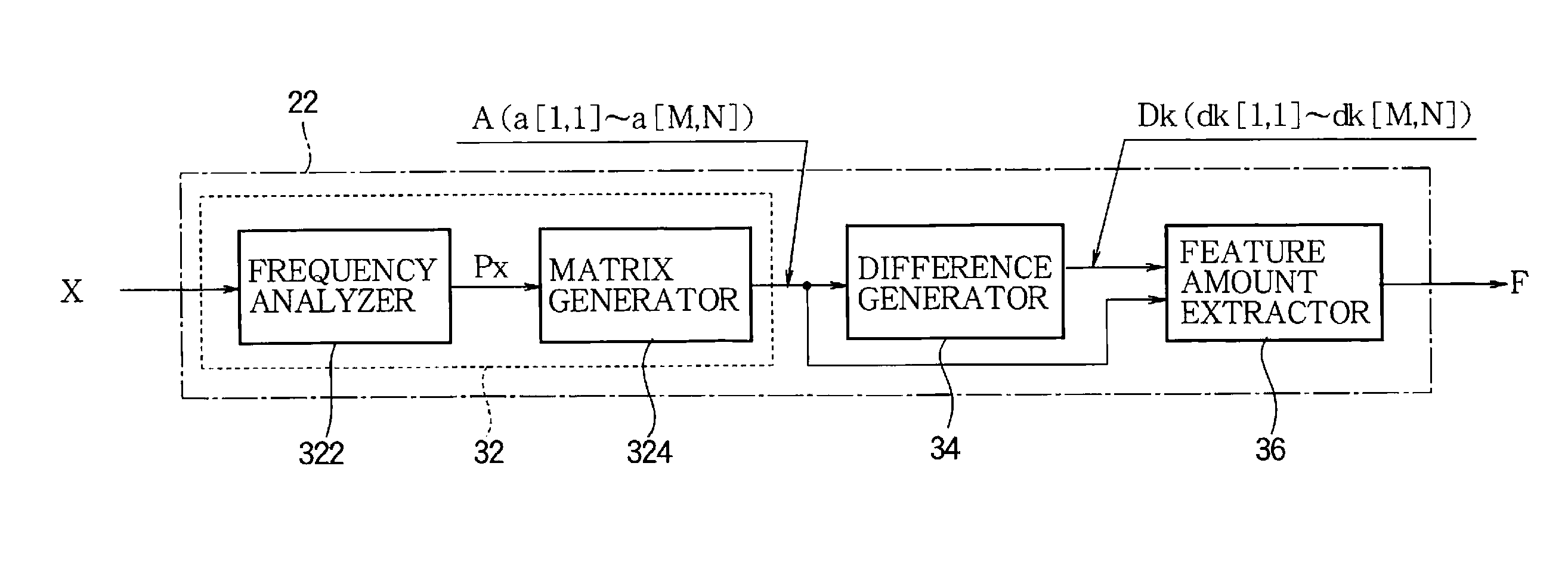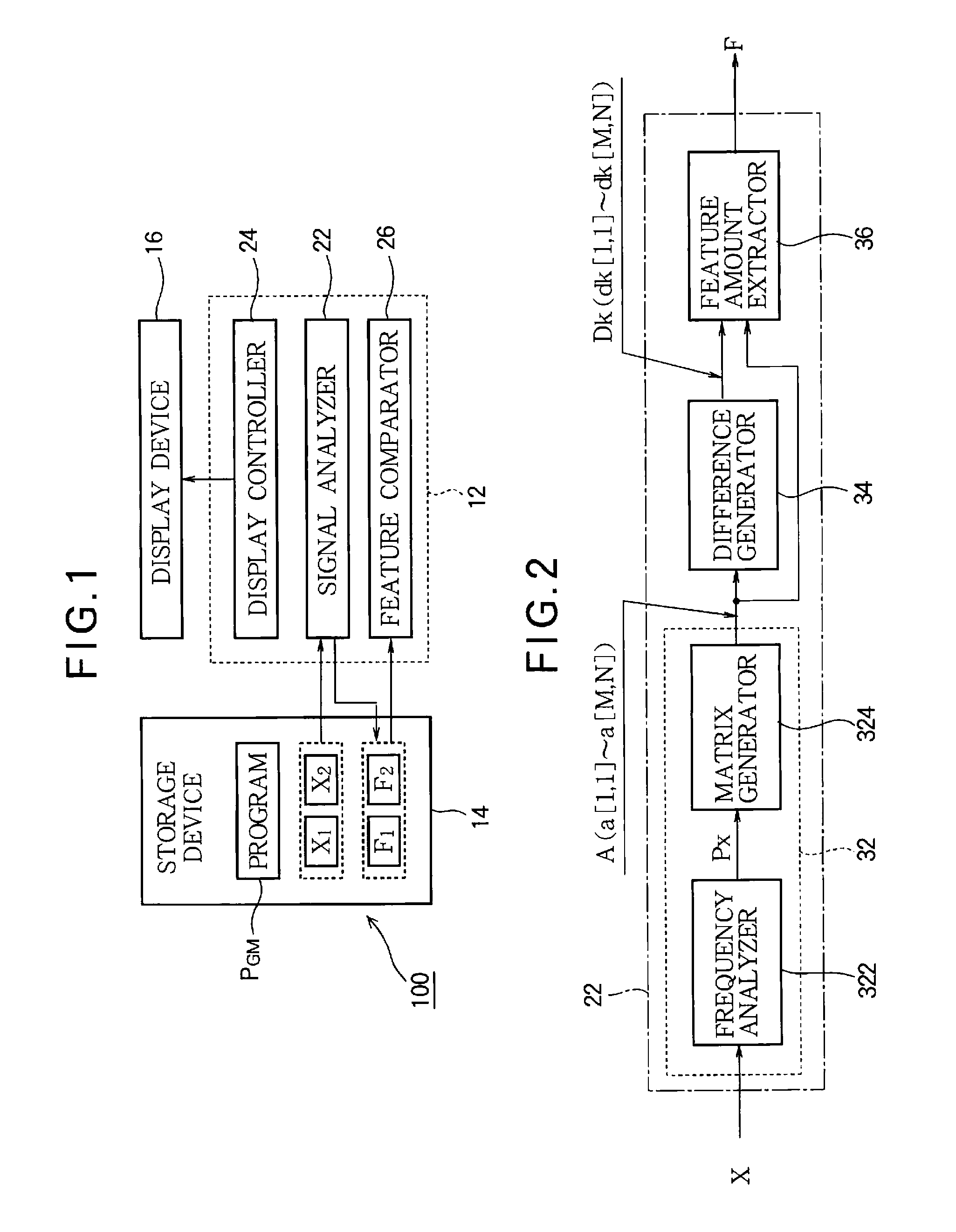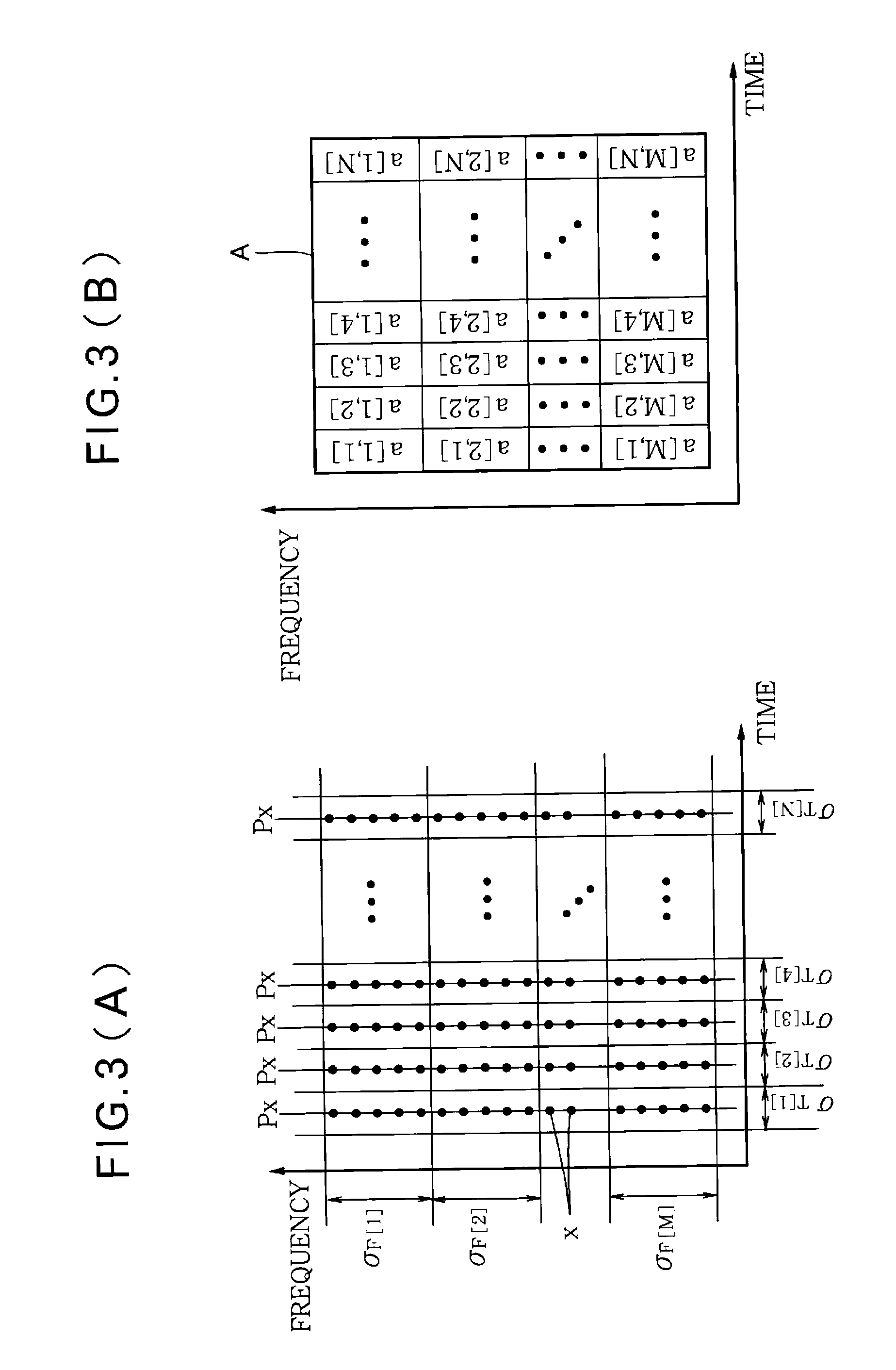Audio analysis apparatus
a technology of audio analysis and audio data, applied in the field of audio analysis apparatus, can solve the problems of large amount of data representing feature amounts and high processing load, and achieve the effect of reducing processing load and reducing the amount of data required
- Summary
- Abstract
- Description
- Claims
- Application Information
AI Technical Summary
Benefits of technology
Problems solved by technology
Method used
Image
Examples
first embodiment
A: First Embodiment
[0025]FIG. 1 is a block diagram of an audio analysis apparatus 100 according to an embodiment of the invention. The audio analysis apparatus 100 is a device for analyzing the characteristics of sounds (musical sounds or vocal sounds) included in a piece of music and is implemented through a computer system including an arithmetic processing unit 12, a storage device 14, and a display device 16.
[0026]The storage device 14 stores various data used by the arithmetic processing unit 12 and a program PGM executed by the arithmetic processing unit 12. Any known machine readable storage medium such as a semiconductor recording medium or a magnetic recording medium or a combination of various types of recording media may be employed as the storage device 14.
[0027]As shown in FIG. 1, the storage device 14 stores audio signals X (X1, X2). Each audio signal X is a signal representing temporal waveforms of sounds included in a piece of music and is prepared for, for example, ...
PUM
 Login to View More
Login to View More Abstract
Description
Claims
Application Information
 Login to View More
Login to View More - R&D
- Intellectual Property
- Life Sciences
- Materials
- Tech Scout
- Unparalleled Data Quality
- Higher Quality Content
- 60% Fewer Hallucinations
Browse by: Latest US Patents, China's latest patents, Technical Efficacy Thesaurus, Application Domain, Technology Topic, Popular Technical Reports.
© 2025 PatSnap. All rights reserved.Legal|Privacy policy|Modern Slavery Act Transparency Statement|Sitemap|About US| Contact US: help@patsnap.com



